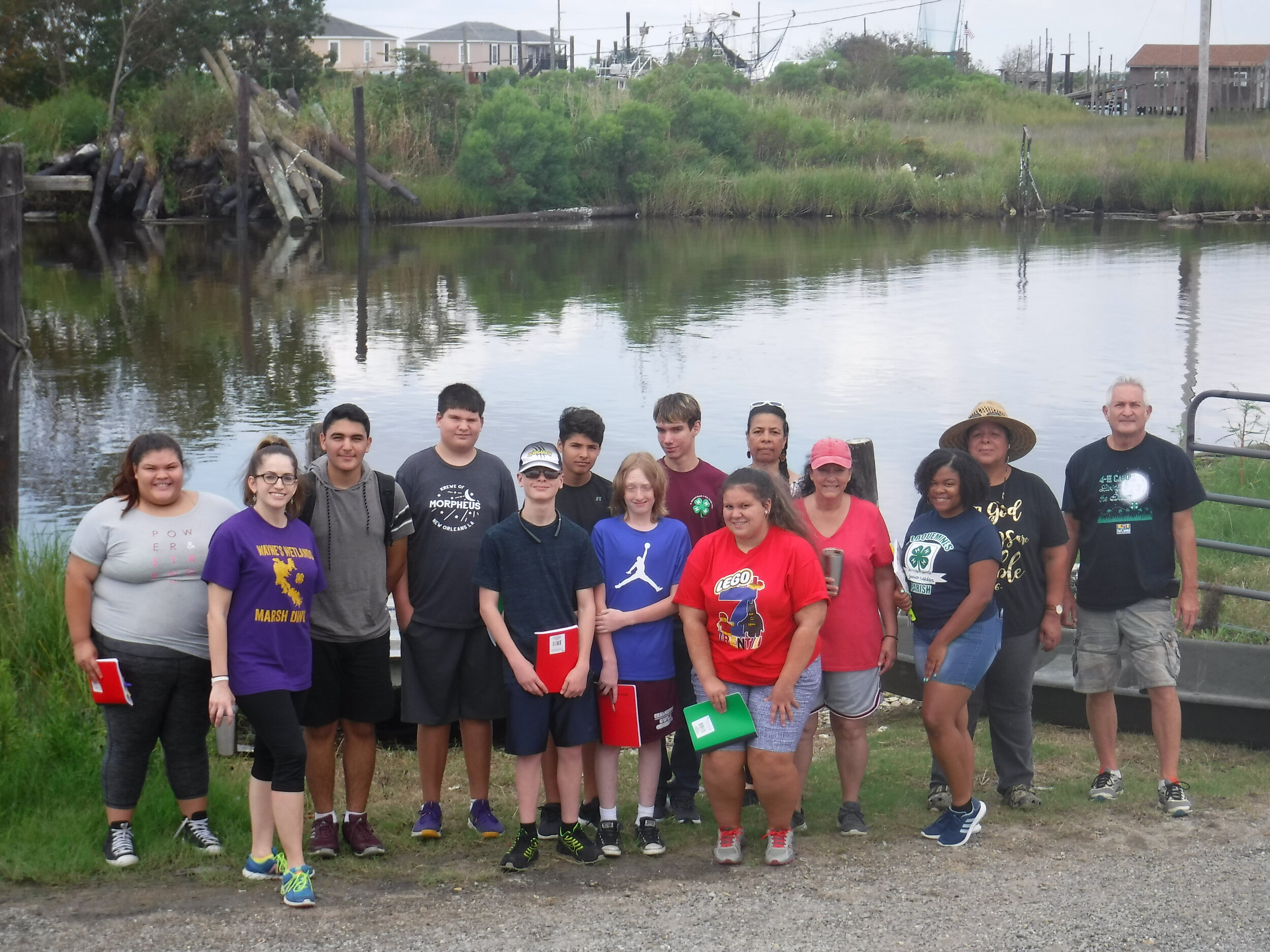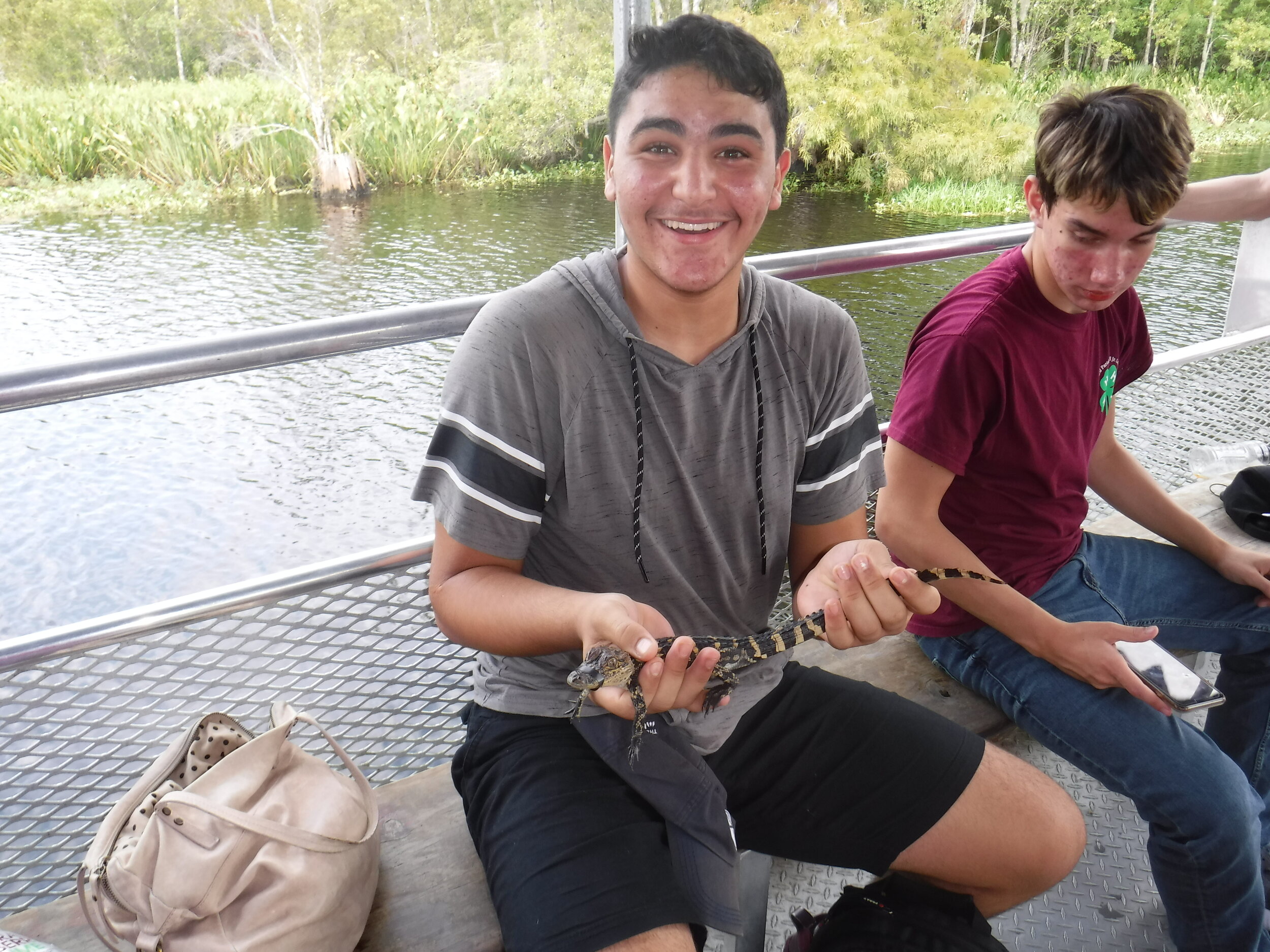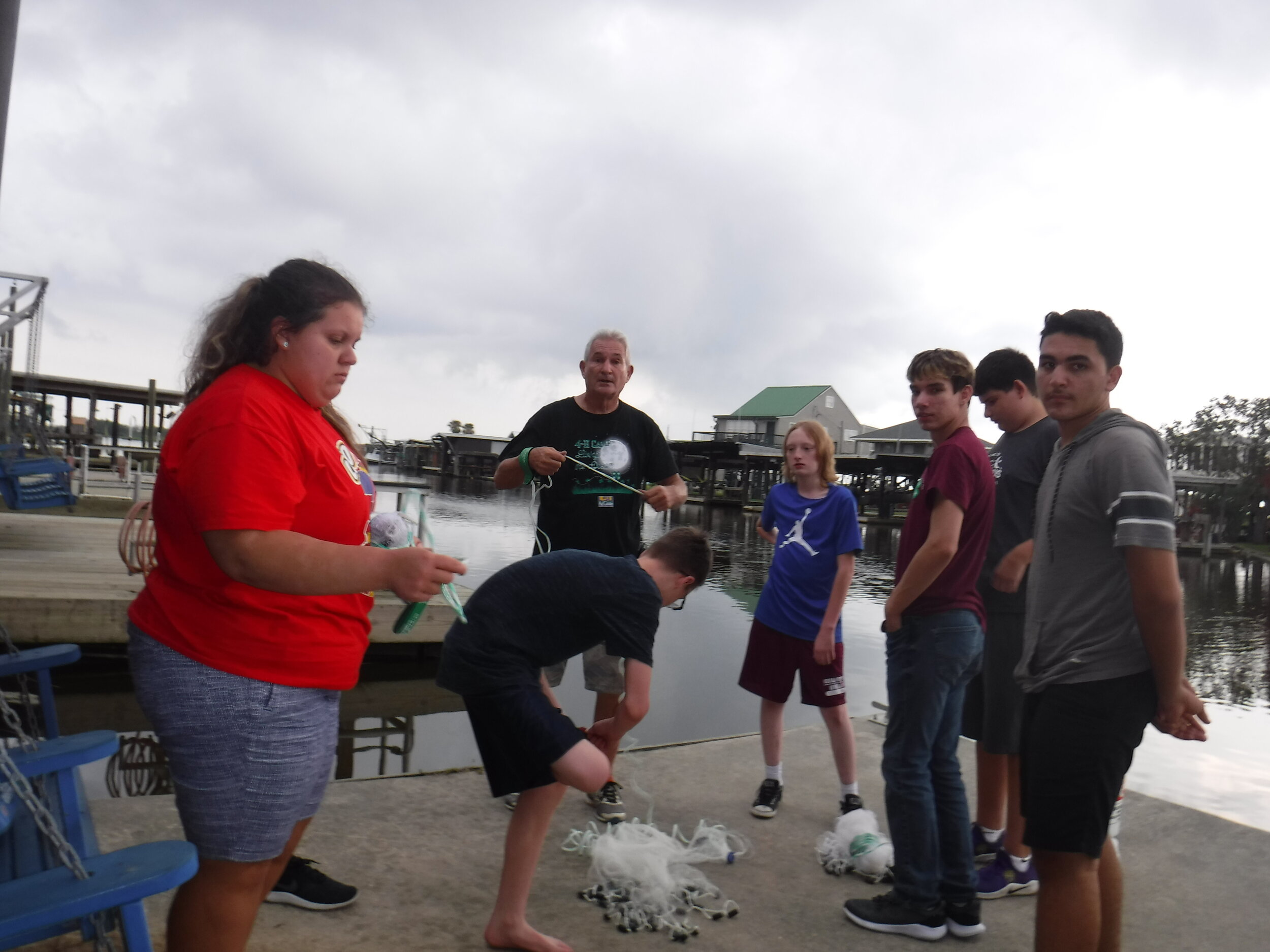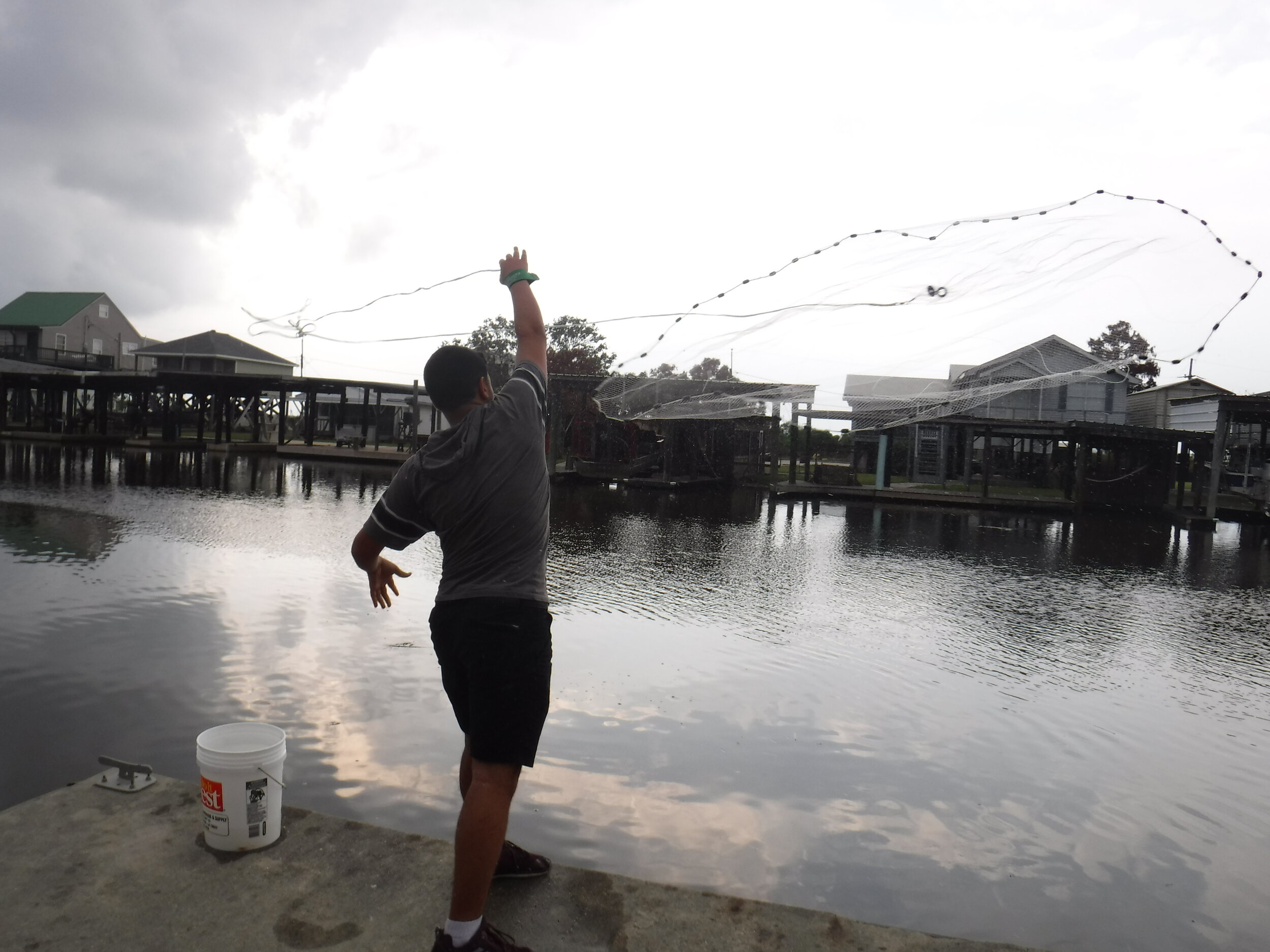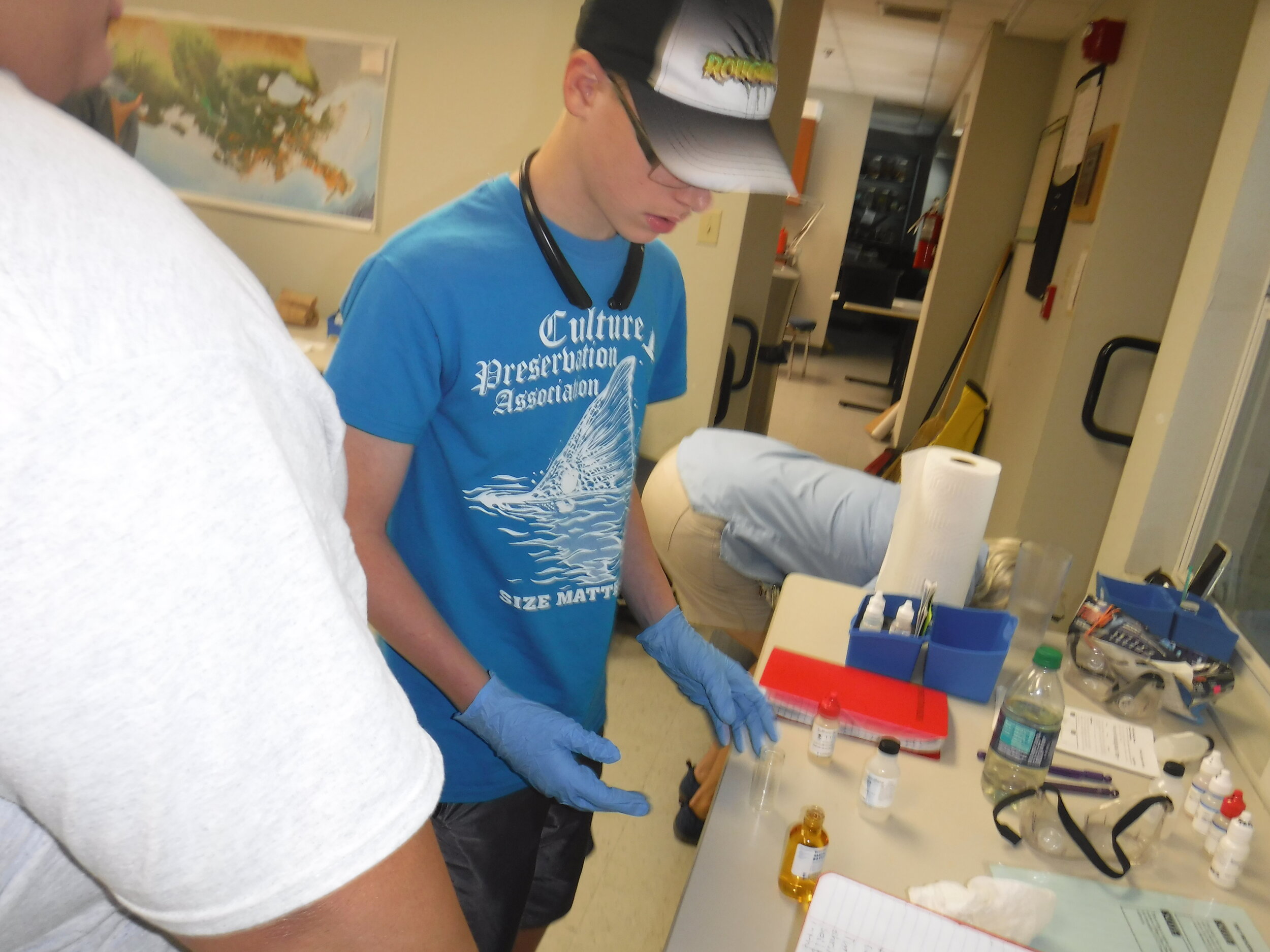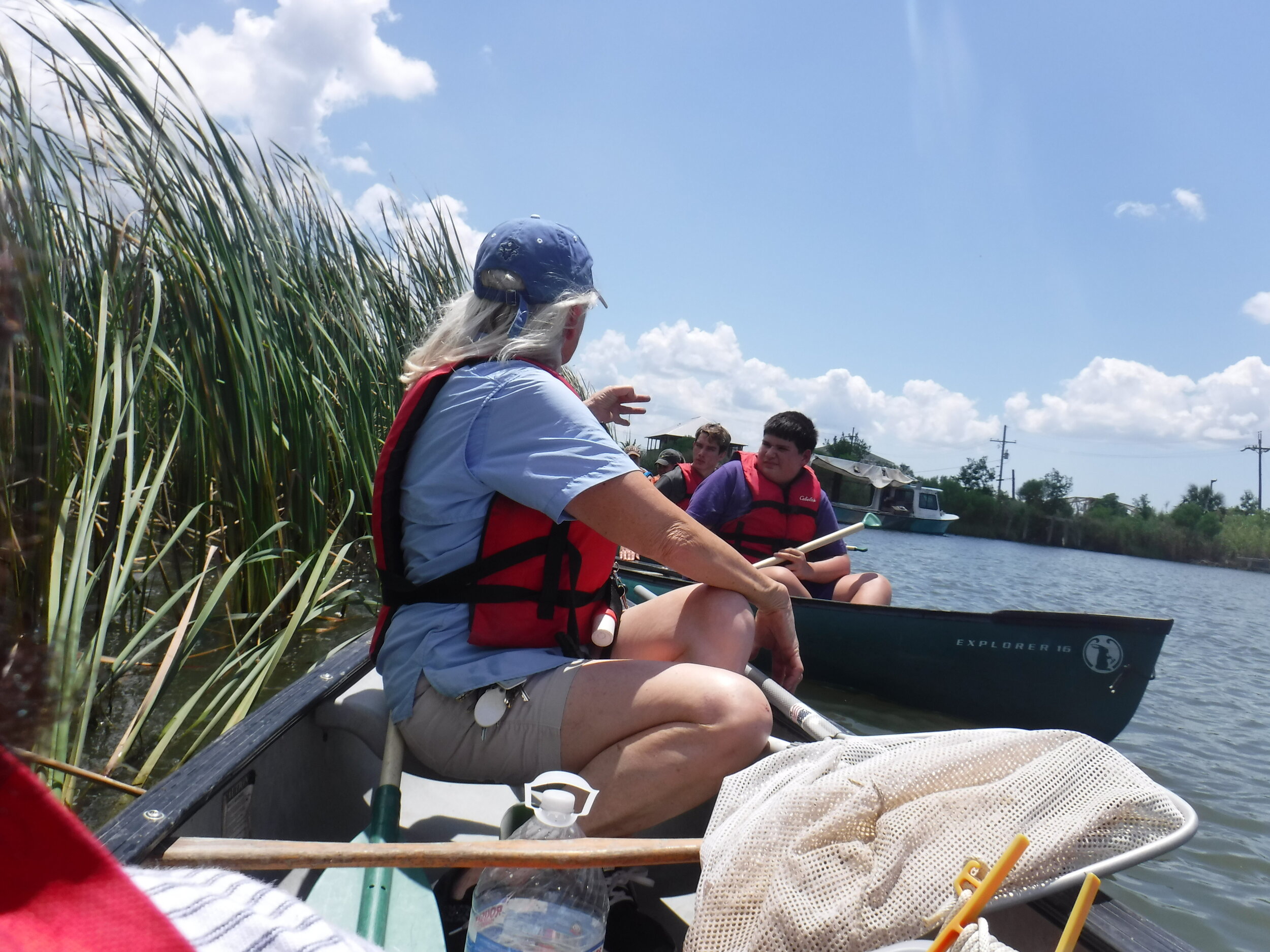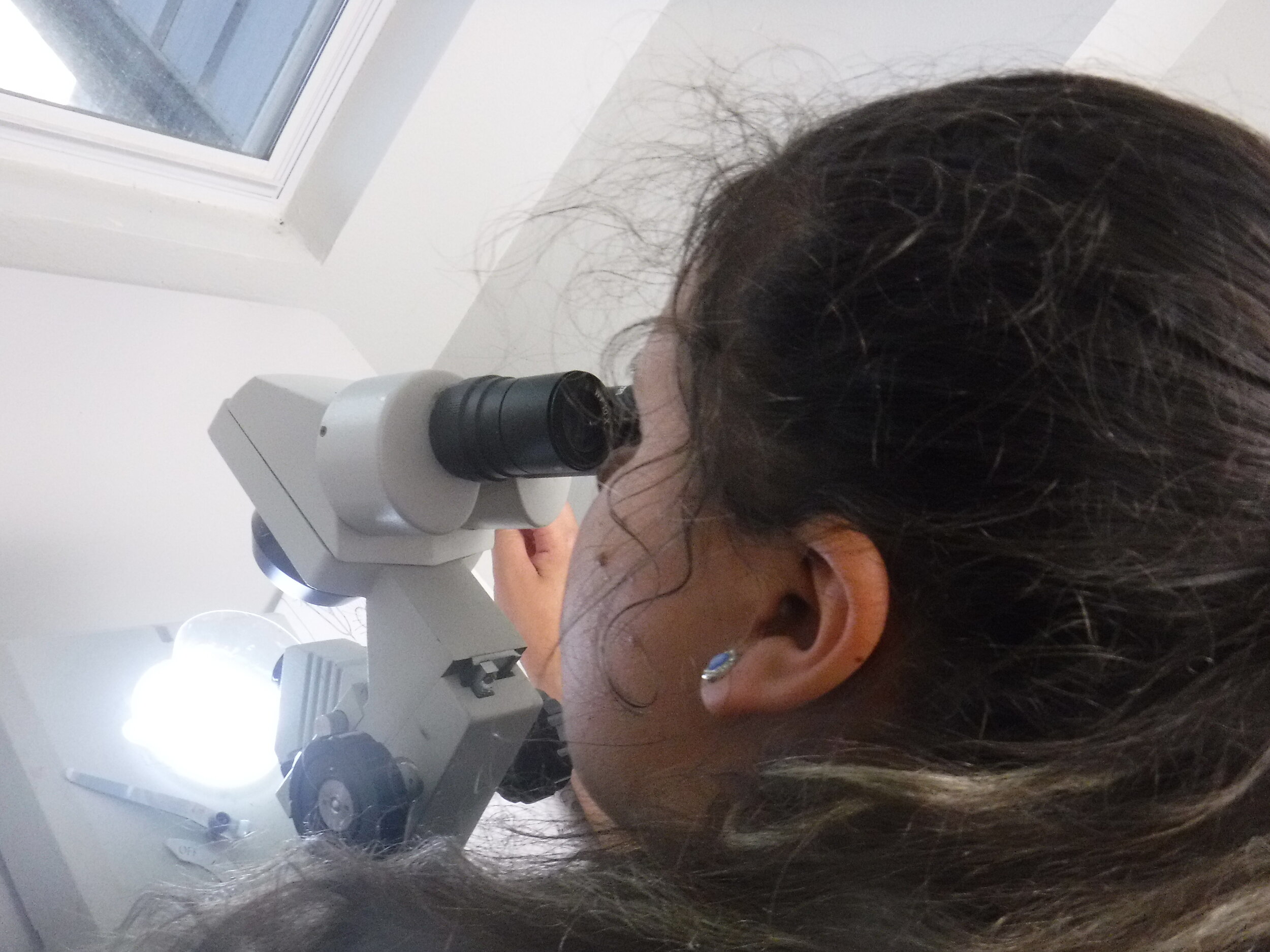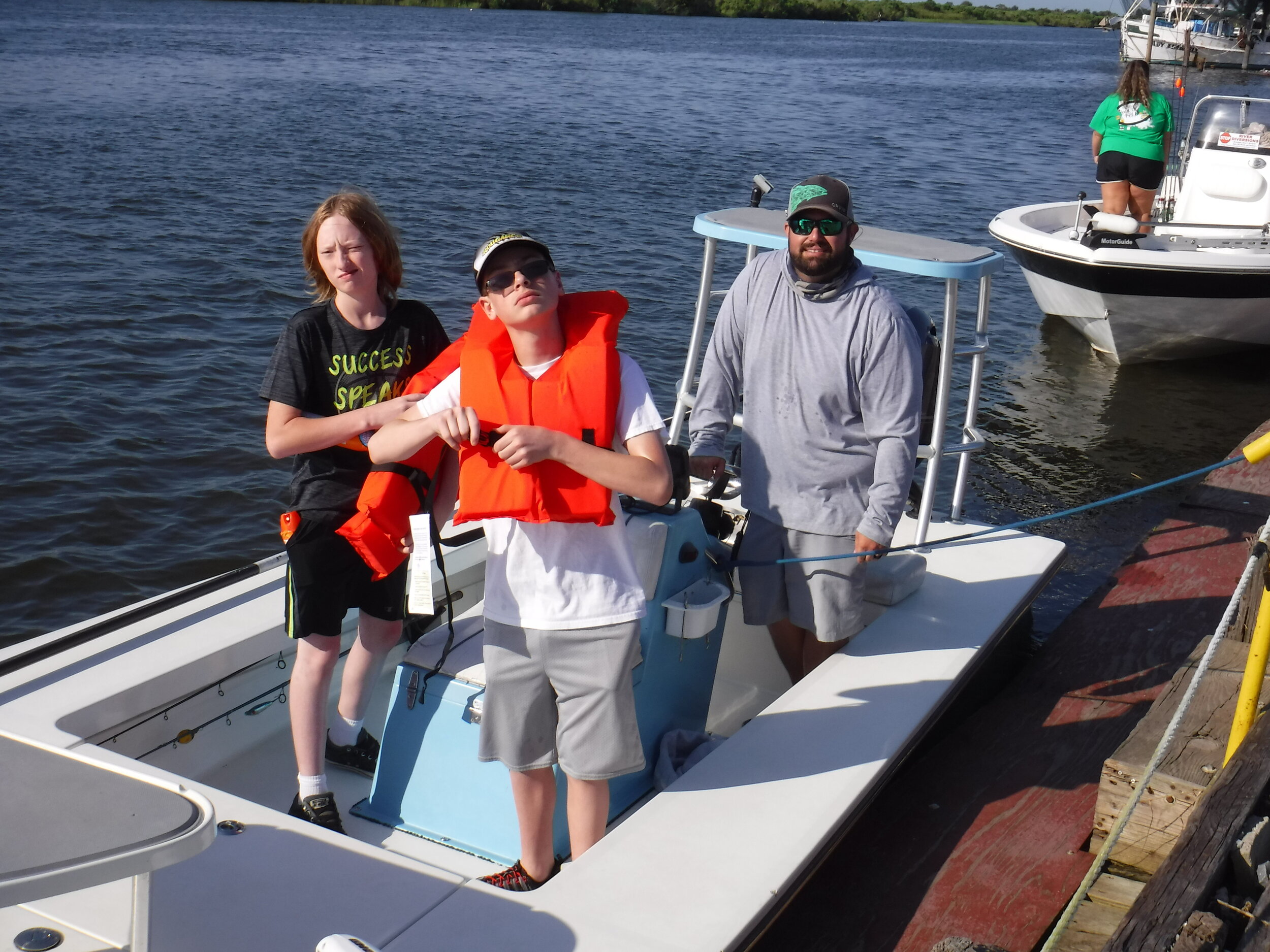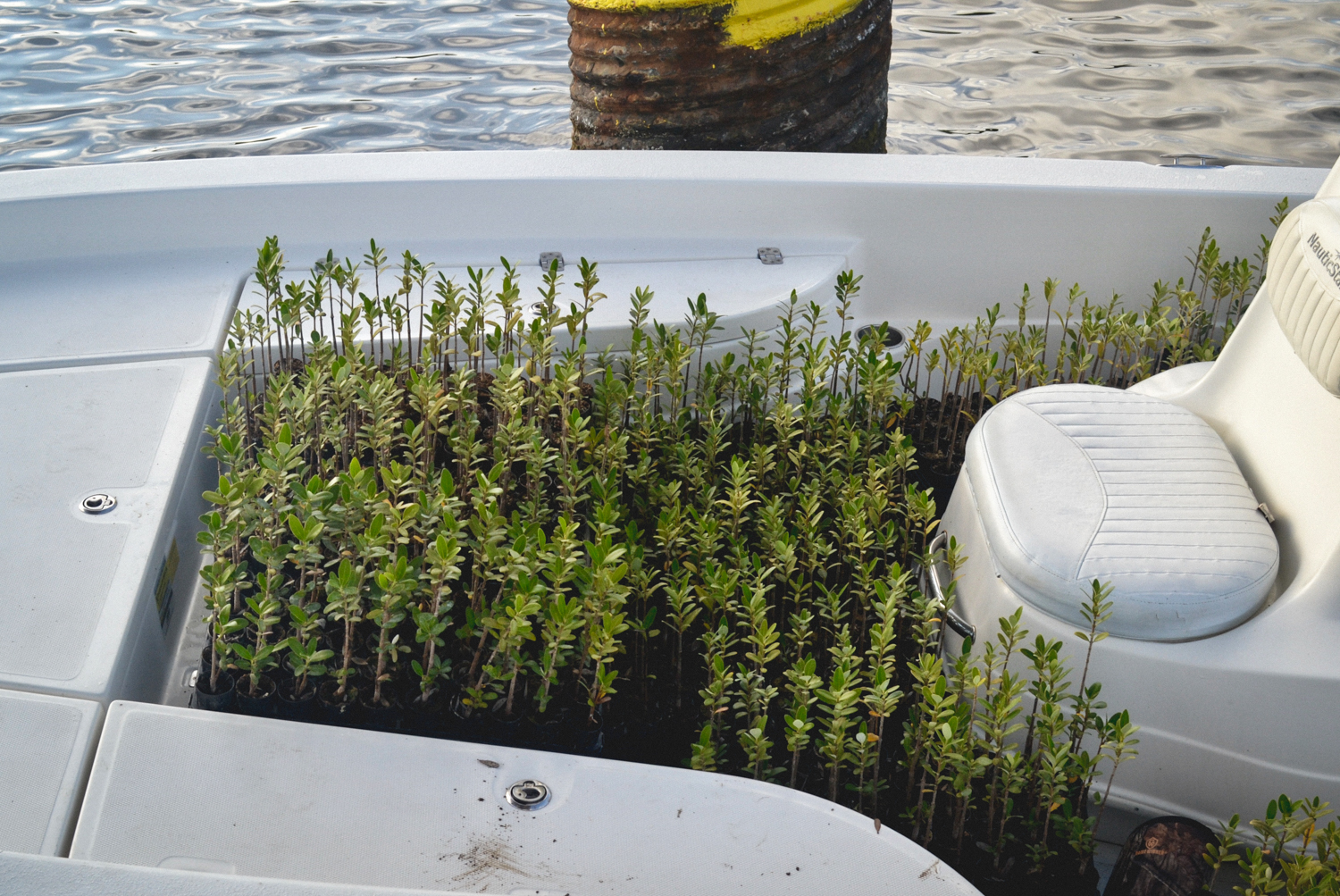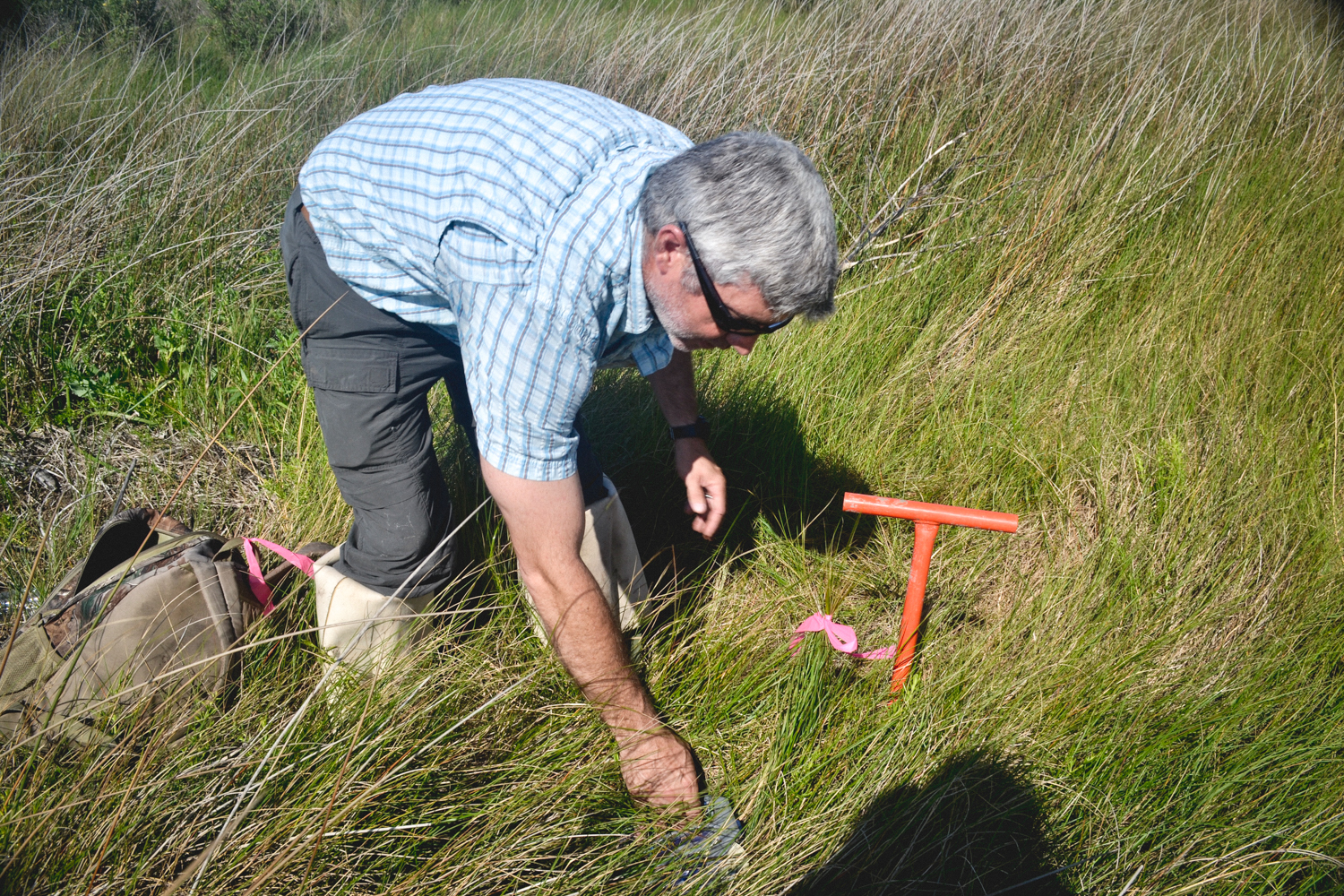Marsh Dawgs
ABLE partnered with St. Bernard and Plaquemines Parishes to put together a yearly program that focuses on getting high school aged kids out to the marsh. Marsh Dawgs is a three day program designed to teach kids about fishing, ecology of our estuaries, and GIS as a life skill to take with them as a possible career builder.
Below is the 2019 itinerary that illustrates the components of the program over the three days in the field.
July 22-26, 2019
Plaquemines, Orleans, and St. Bernard Parishes
Program Itinerary
July 22, 2019
8:15 am Students arrive at LSU AgCenter office (279 F. Edward Hebert Blvd. Belle Chasse) Camp participants consist of 6 high school 4-H youth from Plaquemines Parish and 6 high school 4-H youth from St. Bernard parish. Adult leaders consist of 4-H extension agent (Wayne Burgess), marine extension agent from Louisiana Sea Grant (Dominique Seibert), 4-H extension agent from Plaquemines Parish (Breanna Dozier), and one adult volunteer (Brenda Bulot).
8:45 am Depart for Port Sulphur, YMCA
9:45 am Arrive at Port Sulphur facility. Collect more students. A pre-test will be given to assess their knowledge of topics to be covered during the camp. Camp rules and expectations discussed.
10:30 am Depart for Delta National Wildlife Refuge (Admin Building) in Venice, LA.
11:15 am Arrive at Venice dock and meet the Louisiana Department of Wildlife and Fisheries. Safety speech, life jackets distributed, and boat loaded.
11:30 am Depart in LDWF Headboat. Participants will be given a tour of the Mississippi River’s bird’s foot delta and mud domes on state wildlife refuge. A lesson of the invasive scale affecting Roseau Cane will be given, as well as, actual monitoring activities as directed by LSU. Participants will learn how to measure, count and collect samples and how to use and collect YSI data. Lunch will be on the boat.
3:00 pm Depart for Roseau Cane sampling site for that day’s lodging at LDWF facility.
3:45 pm Fishing activities: Participants will learn how to use various types of recreational fishing equipment such as cast nets, crab traps, and rod and reel fishing poles. They will be aided in species identification and fishery biology. Students will also learn basic fishing skills such as knot tying and setting poles.
6:30 pm Dinner
7:30 pm Night lectures: History of the Mississippi River in Louisiana and connecting states and tributaries, New Orleans Ports, outfall and algal blooms.
9:00 pm Clean-up, showers, nature movie or night fishing & bed.
July 23, 2019
6:00 am Arise, breakfast, pack-up, and clean-upcleanup. Make lunches.
7:45 am Depart LDWF overnight facility
8:30 am Arrive at Venice Marina and unload LDWF headboat
9:00 am Depart for Atakapas-Ishak/Chawasha tribe in Grand Bayou.
10:00 am Arrive at Atakapas-Ishak/Chawasha tribe in Grand Bayou. Participants will learn their traditional fishing methods, culture, and history of the tribe.
12:00 pm Depart for Fort Jackson.
12:40 pm Arrive at Fort Jackson. Lunch.
1:15 pm History of Fort Jackson. Mapping Lecture: Includes compass use and GPS mapping activity.
2:30 pm Depart for Lake Hermitage camps.
3:00 pm Arrive at Lake Hermitage camps, unpack. Fishing activies.
5:30 pm General Wetland Overview including Louisiana history, types of wetlands, marsh creation, biodiversity, species classification. Lecture includes CPRA’s Master Plan and sediment diversions.
7:00 pm Dinner
8:00 pm Night Lectures: History on the trapping industry, fur regulations and alligator farming in Louisiana.
10:00 pm Clean--up, showers, nature movie & bed.
July 24, 2019
7:00 am Arise, breakfast, pack-up, and clean-up.
9:00 am Depart for Coastal Education Program and Coastal Education Research Facility.
10:30 am Arrive at Coastal Education Program and Coastal Education Research Facility.
10:45 am Water Quality class: Focuses on mapping, location description, water chemistry, biology, data analysis, and formulation of conclusions. Chemical tests include dissolved oxygen, pH, chloride, nitrate, nutritab and buffer tabs.
12:30 pm Lunch
1:30 pm Canoeing: Participants will canoe in the bayous near the research facility to learn about ecosystems, wetland habitats, species diversity, and food web relationships. Lifejackets and canoes distributed.
4:30 pm Return & clean-up.
5:00 pm Otolith activity: Participants will learn about otoliths and how they are used for age and growth studies. Removal of otoliths from various species will be demonstrated, participants will remove otoliths from Spotted Seatrout.
7:00 pm Dinner
8:00 pm Night Lectures: The Commercial Fishing Industry in St. Bernard and Plaquemines Parishes including oysters, crabbing, shrimping, fin fishing, and menhaden.
10:00 pm Clean-up, showers, nature movie & bed.
July 25, 2019
6:00 am Arise, pack-up, and clean-up
6:30 am Depart for breakfast at Penny’s.
7:00 am Breakfast at Penny’s.
8:00 am Depart for Hopedale Marina.
8:30 am Arrive in Hopedale to meet up with fishermen for a day on the water (5 boats). Rod and reel fishing with all species caught to be prepared for dinner that night.
12:00 pm Return to dock for fish cleaning demonstration (boat captains) and lunch.
1:00 pm Marine Debris cleanup
3:00 pm Depart for Los Islenos Museum for tour and lodging.
3:15 pm Arrive at Los Islenos Museum, tour of the grounds and history given by Bill Hyland.
4:30 pm Unpack and setup lodging. Build campfire.
5:00 pm Fish Imprints: Participants create fish imprint shirts by painting and pressing various small fish species caught during the camp.
6:00 pm Post-test. The same test given at the beginning of the camp.
6:45 pm Dinner (seafood caught during the camp). Fish fry and shrimp boil.
Black Mangrove Planting Program
ABLE enlisted the help of St. Bernard Parish Government (SBPG) and Nicholls State University (NSU) in 2016 to initiate a Black Mangrove Planting Program in St. Bernard Parish, Louisiana. The program is focused on increasing black mangrove (Avicennia germinans) habitat along the eastern outlying islands of the Biloxi Marsh Complex for the purpose of: (1) restoring/creating essential fish habitat ; (2) increasing the overall health and resilience of the coastal ecosystem, including providing habitat for a number of threatened and endangered birds ; and (3) reducing risk to life and property in the region by enhancing natural storm surge defenses and protecting inland flood control infrastructure.
Phase 1: Propagule Collection/Potting
The black mangrove is a native coastal wetland plant species that performs a number of valuable functions, including: cleansing excess nutrients and pollutants, providing nursery habitat for crustaceans and fish, providing food for marine habitat, and nesting areas for birds. The plants are also highly valuable in the carbon sequestration process and have extensive root systems which strengthen and sustain the shoreline, thereby mitigating the impacts of storm surge. Black mangrove propagules are collected from existing black mangrove stands in St. Bernard Parish each year and transported to the Chalmette High School (CHS) green house. Each collection effort should yield approximately 1,500 propagules.
Phase 2: Greenhouse Monitoring/Reporting
Potted propagules are monitored weekly by CHS 4-H students at the direction of local public officials and NSU partners. The propagules are photographed each week and shared with team members in order to ensure the health and growth of the young plants.
Phase 3: Strategic Planting Site Selection
SBPG and its program partners selected sites in the Biloxi Marsh Complex for the initial planting of 1,000 black mangrove seedlings. First, historical aerial imagery was reviewed to ensure that these selected sites are not exhibited highly accelerated rates of erosion compared to the background rate of the region. Thereafter a pre-restoration site visit was performed to thoroughly examine the existing plant community composition and density at the potential restoration sites to ensure compatibility with the planting of mangrove seedlings.
Phase 4: Strategic Planting
Once transported to the sites, appropriate marsh surface elevations for the transplantation of black mangroves were demarcated. The initial planting were conducted by volunteers at the direction of NSU and other experienced program partners. Seedlings for the second- and third-year plantings will be obtained via the local greenhouses and commercial purchase or donation. The ultimate goal is to strategically plant a minimum of 1,000 new seedlings each spring during the life of the program.
Phase 5: Strategic Planting Monitoring/Reporting
Program partners will conduct site visits, take before-and-after photos and video of all strategic planting sites, and will appropriately document site conditions both pre- and post-intervention. Immediately subsequent to completion of strategic plantings, the elevation and location of each mangrove seedling will be recorded. The survivorship of all planted mangroves will be determined in spring, summer, and fall of each year. Also, any establishment of new mangroves through propagule recruitment will be noted.


